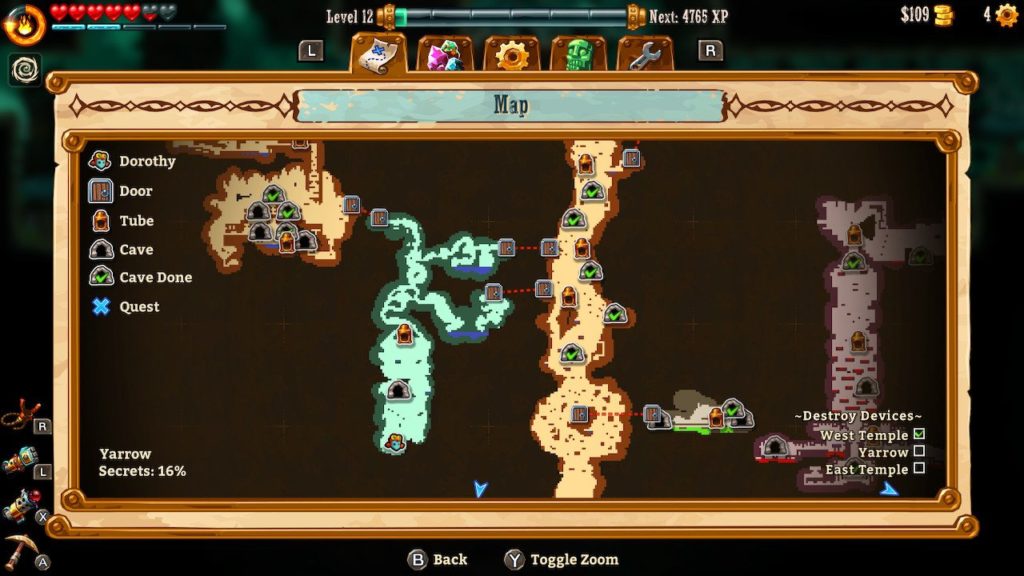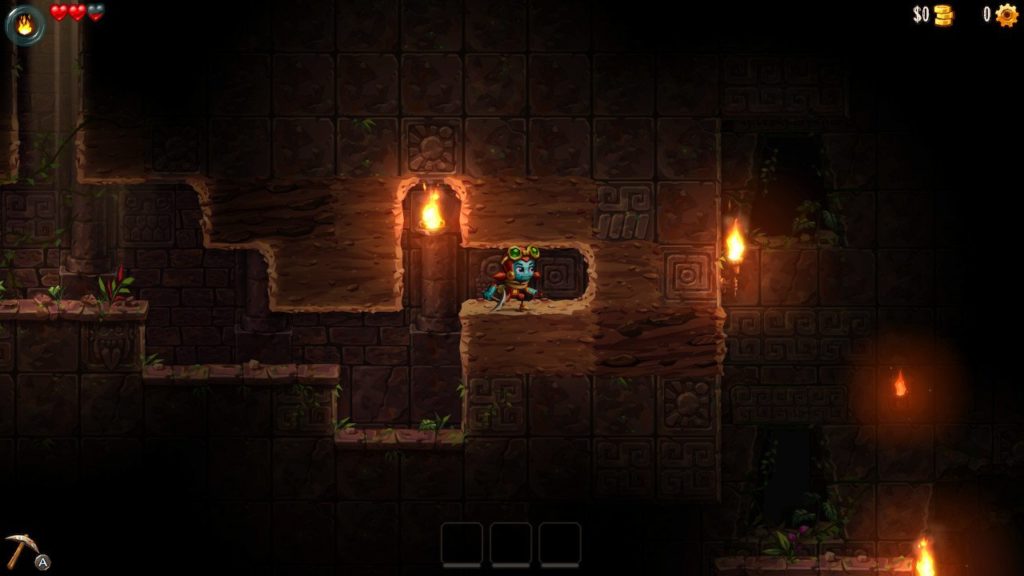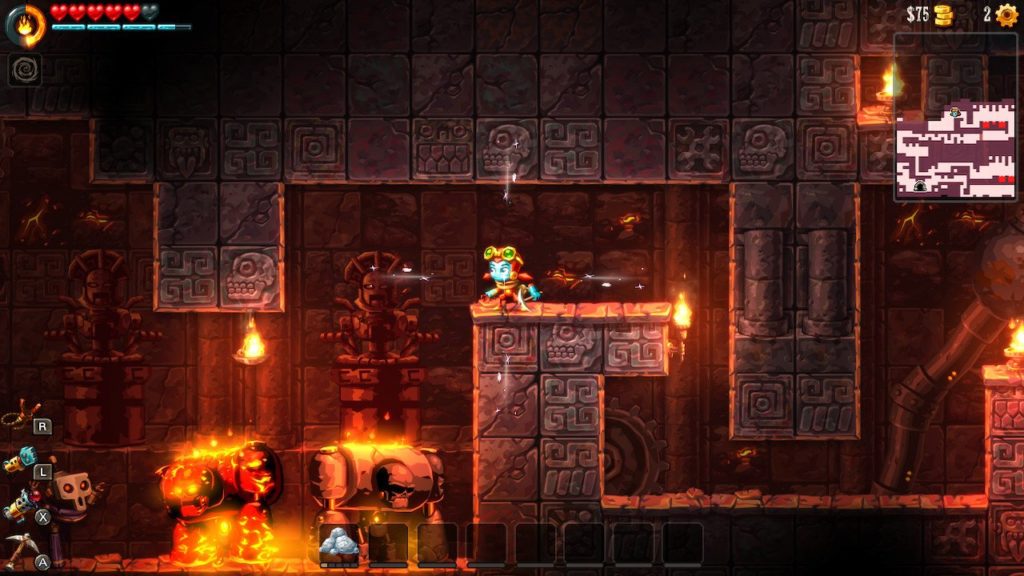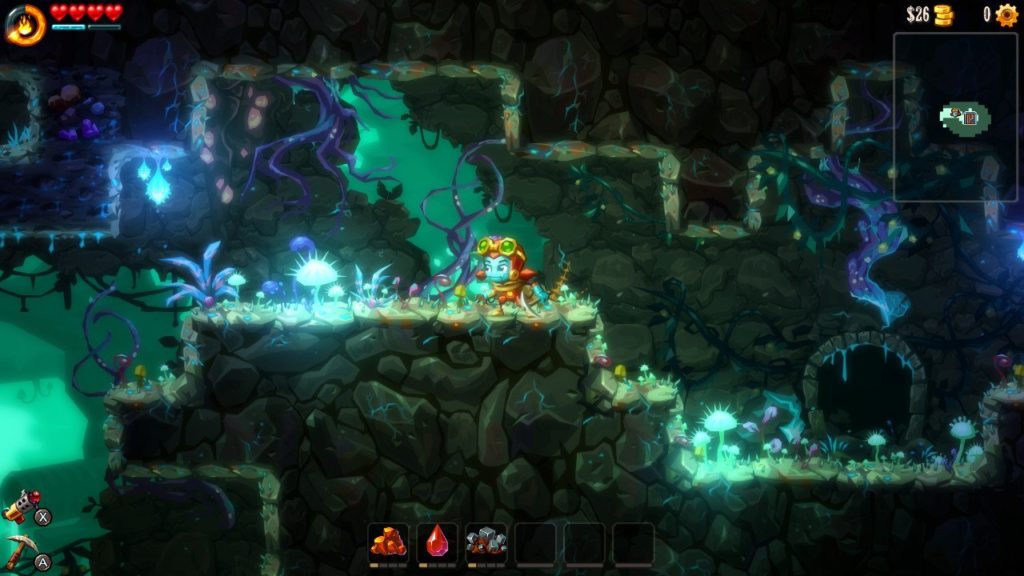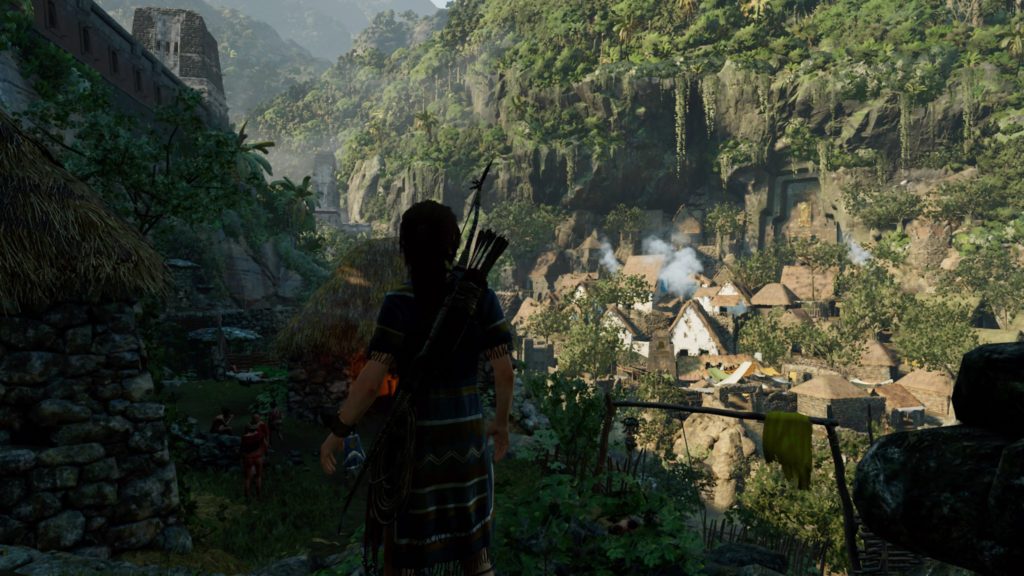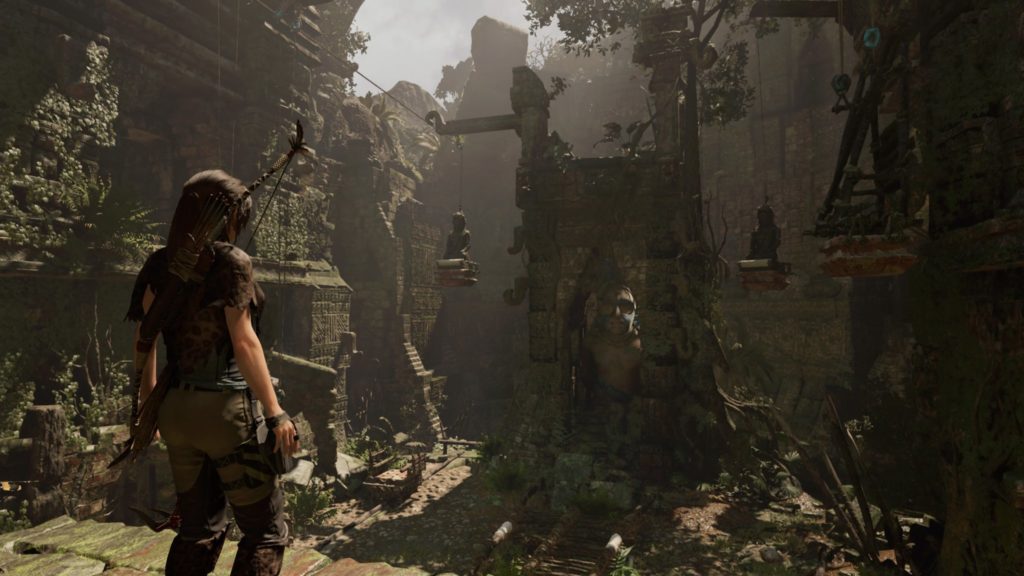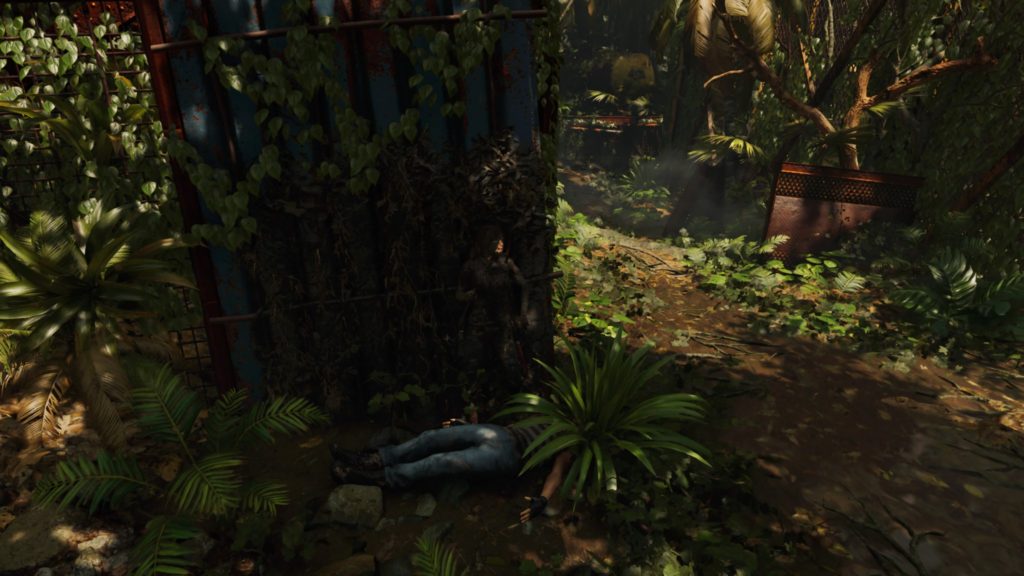- Genre: Action/Adventure
- Platform: PS4
- Also Available On: Xbox One
Red Dead Redemption 2 is a curious experience. So much time was clearly spent on the technology of the game, and it is super impressive. Just as impressive is the story, which manages to craft perfect heroes and villains while simultaneously ending with an epilogue that connects to the first game in a way that elevates the original’s story even more. However, the gameplay is the odd ball out. There’s a lot of pieces here to take in, but they don’t fit together in a clean way – the game often feels like a collection of parts with no collective whole. Are the parts that are great enough to recommend playing this one?
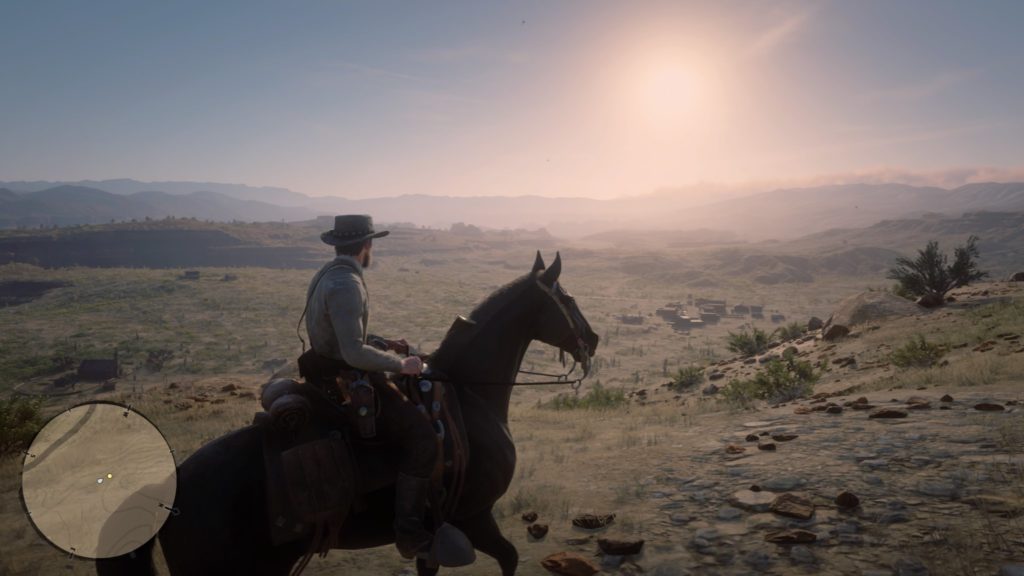
RDR2 is the type of game that I kind of dread playing. I really enjoyed the original title despite its flaws, and that really centered around my enjoyment of the story. However, that game in particular wrote itself into a corner where a direct sequel was impossible. In this case, Rockstar went with the direct prequel approach. You’re generally playing as Arthur Morgan, though RDR1’s John Marston is still around as a member of your gang.
While this game is heavily focused on Arthur, this is still entirely the story of John Marston. Throughout the game, you see the events that shape Marston in the original – why he went after the people he did, why he cared so much to rescue his family, why the FBI had cornered him to begin with. Marston ultimately becomes the best of Arthur, and the care given to the growth of Arthur’s character ultimately has the great payoff of leading into the original game through RDR2‘s fantastic epilogue chapters played through the eyes of Marston. All of the narrative pieces that come together really end up elevating the story of RDR1 while allowing us to have a story that is fantastic as its own standalone experience.
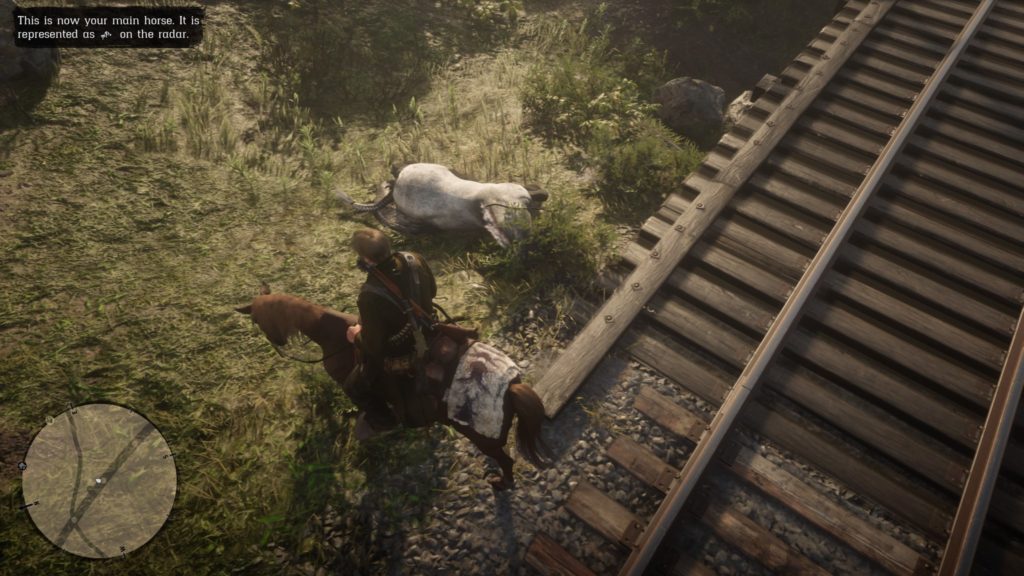
However, the gameplay is a lot less polished, and it’s definitely a big negative to me. Rockstar’s titles in the past decade or so have all had fairly similar issues to me. There’s always 1000 different systems that feel like they were made independent of each other and never tied together in a cohesive manner. In GTA4 and GTA5, the driving functioned but wasn’t great. In RDR1, the horse was there and felt like a chore. In all three of those, the gunplay was quite frankly below average at best and entirely exploitable. Overall their gameplay always seems to take a back seat at a polish level to technology and story. While that has worked great for them, it’s frankly kind of a bummer to see that continue.
I’ll start with some small stuff, because I think it’s indicative of the lack of care shown to allowing the gameplay to iterate to a high polish state:
- I lost track of the amount of times I was attempting to hitch my horse up, then it would continue moving forward and run people over by accident, despite me having started the button input to begin hitching. This unfortunately usually results in the police chasing after me. Given a bit of polish, have hitching automatically lock and slow down the horse into the hitch point to reduce errors. If the user lets go of the button early, then allow the horse to resume normal movement.
- You can fast travel if you’re at camp, and can do a pseudo fast travel by buying train tickets. Does this mean they technically have fast travel in the game? Sure. Does not being able to arbitrarily fast travel suck? Yes. Should they have done a more modern-style fast travel where unlocking travel points allows it to happen from anywhere? Absolutely. The current system is just encouraging empty gameplay hours to ride between missions.
- Skinning animals is a large part of the general upgrade path for a lot of gear in the game. Unfortunately the skin trader only has two locations – one in the far east of the map and one in the far southeast of the map, both of which you don’t really spend much time in until well into the game.
- Quite a lot of missions are preceded by a 5+ minute horse ride to the destination while the player follows some NPC. This would be all well and good, but many of these don’t include a checkpoint right afterwards. Nothing is more frustrating than being unable to skip a replay of a bunch of dialog because it isn’t technically a cutscene.
- There’s a cover system, but it’s quite frankly not any more advanced than that seen in Gears of War more than a decade ago. You hit a button, hard lock to the nearest thing, have really bad mechanics to unlock from cover, and pretty rough mechanics to transition around or between different covers. Does it work? Sure. Is it good? Not really.
Those are just a few examples, but what it really comes down to is that it feels like realism or feature count constantly won out over fun. Do I get why they stuck to that as a principal of the development of the game? Sure. Does it make the gameplay worse for it? Absolutely.
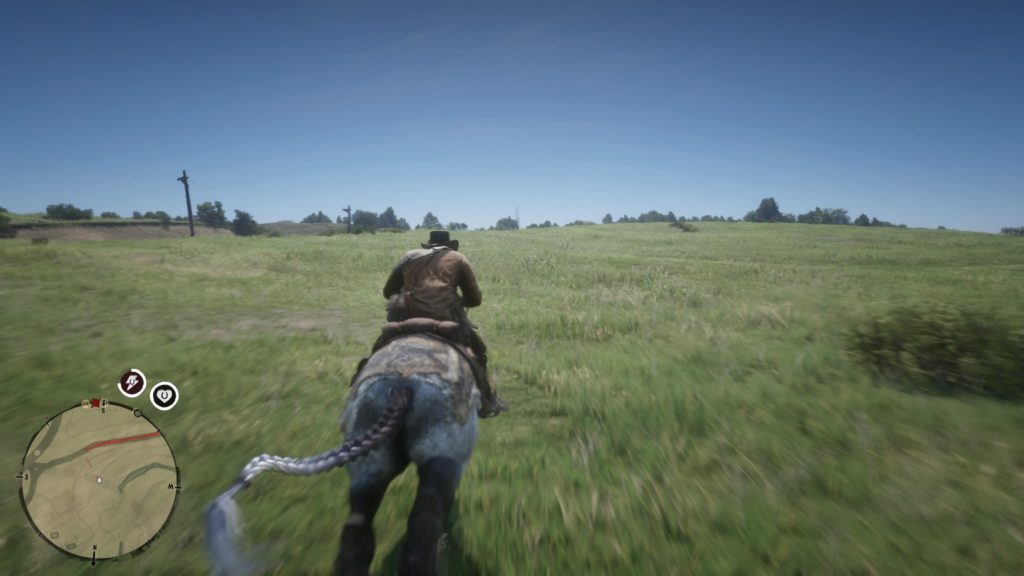
The horse is also entirely frustrating, especially when compared against the horse mechanics introduced by Assassin’s Creed Origins and Odyssey. RDR2 has the autopilot horse that AC does, but requires being in the cinematic camera, meaning it can’t be used for combat. Anything other than a gallop also requires the player to rhythmically tap X in sync with the horse’s gait which becomes entirely entertaining the first time you have to ride ten minutes across the map, let alone 40 hours later when you’re still tap tap tapping away to move fast. Of course, this isn’t necessary if you’re following alongside an NPC. At that point you can just hold X to match their speed. Unfortunately, it doesn’t necessarily cleanly match their turning, so you can get way off course if you aren’t actively turning the horse anyway. What this all comes down to is that combat on a horse is needlessly shit, and you spend a lot of time getting into combat on your horse.
You’ve got four entirely different sets of things you want to be doing on a horse – shoulder buttons for weapon firing input, face buttons for speed input, left stick for horse turning, and right stick for camera aiming. Right off the bat, speed vs camera aim are in a fight for a thumb. In a lot of situations, the people you are fighting are chasing you, so you’re trying to steer backwards while also not being able to see where you’re going. It’s all just a bunch of inputs fighting against each other in a way that Ubisoft already solved. The entire setup would be significantly better if you could just lock onto the nearest road at a fast gallop and completely remove the need to steer or manage speed, allowing the combat to shine and the player to focus their energy on taking out enemies. It would also have allowed for much more dynamic combat where enemies are coming from multiple directions since the player wouldn’t be having to manage so many disparate input needs.
It’s even more frustrating because they accidentally have sequences that allow this. There’s enough situations where you’re either the second person on a horse, or in the back of a horse drawn cart where you literally are a road-locked turret, and those all work fantastically better as combat situations than general minute to minute horse riding combat. Between these sequences and Ubisoft’s AC horse, I’m baffled that nobody noticed that there were already solutions that are simply more viable for smooth gameplay.
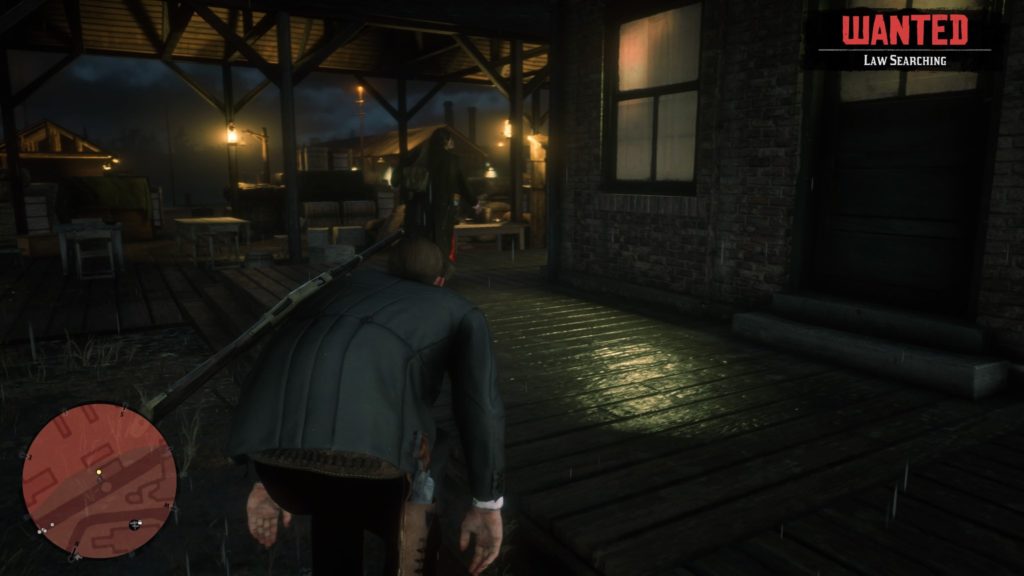
For what it’s worth, it also doesn’t help that the gunplay is down right average in RDR2. There’s a pretty decent range of weapons between multiple types of pistols, revolvers, rifles, and bows. However, they didn’t really separate themselves enough for me to care to use a specific weapon in most situations, unless I wanted the bow for stealth or a sniper weapon for longe range firing. In the most combat, the range of the weapon didn’t matter as I could lock fire snipe just as well with a revolver or rifle simply due to how bad the input setup worked.
Hip firing is effectively useless in RDR2. The game’s general gamepad input is pretty miserably bad. Target adhesion for right analog input is pretty rough, there’s not much in the way of useful magnetism to hone you in on a target close to the reticle, and I didn’t really get much out of turn sensitivity options. What they do have in place of good camera movement is an entirely exploitable hard lock system. Hitting the lock on button anywhere even close in screen space to a target will hard lock you to the target’s center. A simple stick flick upwards will pretty much guarantee a shot on the target’s head or neck area. I’d estimate that I could headshot about a 75% effective rate just doing this alone. The AI playing a lot of sit in a spot and peak out every now and then doesn’t make it any better.
Quite frankly, it trivializes combat in a way that makes the game far worse. The most tense situations end up being ones where the game simply has to throw targets at you because it’s easy to one-shot guys, and their AI isn’t trying to do anything other than move forward from cover to cover towards you. However, you can pick off entire crews of enemies in a matter of seconds because of how easy it is to exploit the targeting system. While I did occasionally die in some of these setups, it never really felt challenging, and death felt more happenstance based on me not paying attention to my health and getting to cover.
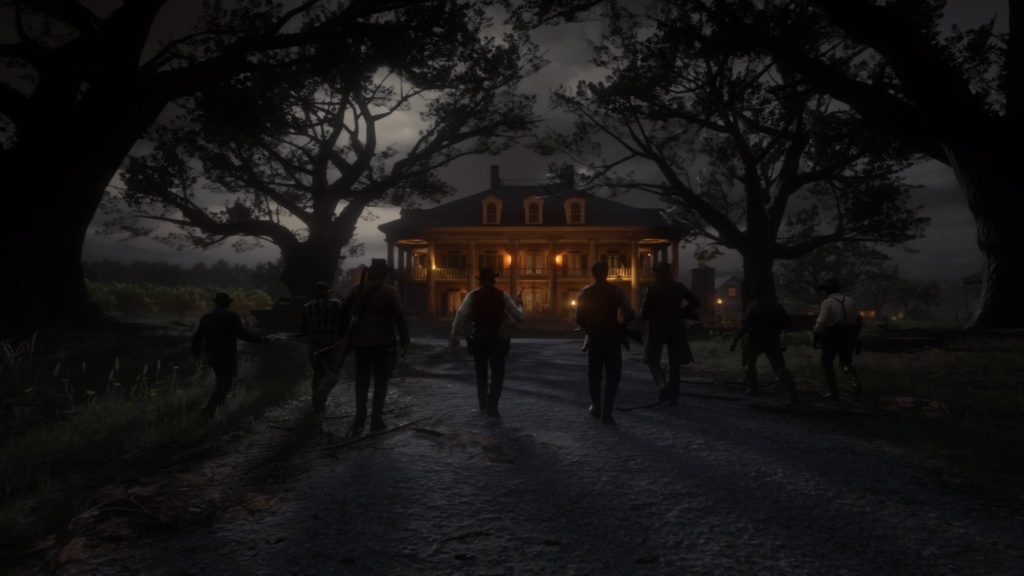
I realize that that reads like a lot of complaining, and to some extent it is. However, for me it’s more frustration that a company can spend the amount of time and money it takes to make a game of absolutely mind blowing scope like RDR2, but still come up with something that has gameplay that feels entirely average. There’s a whole lot here that technically works, but spending more time on gameplay polish instead of time on feature creep (do the horses really need to periodically shit everywhere for realism?) could have left us with a game where the gameplay matched the fantastic story and visuals, rather than feeling like an afterthought.
All that aside, is this worth playing anyway? 100%. The story is going to be one of the best wild-west stories that we likely see for a long time in games, and I think it’s worth physically being in the game playing over watching the story on Youtube. Visually I was also constantly floored with each new vista I came up to, or each time I entered the largest city of Saint Denis at night. Those things being so good are what makes it incredibly frustrating that the gameplay simply doesn’t match it. This game is definitely a case where the sheer amount of money spent on it is obvious and raises the game up to something really damn good despite it having a ton of flaws, and for that alone I think it’s worth the spin.


